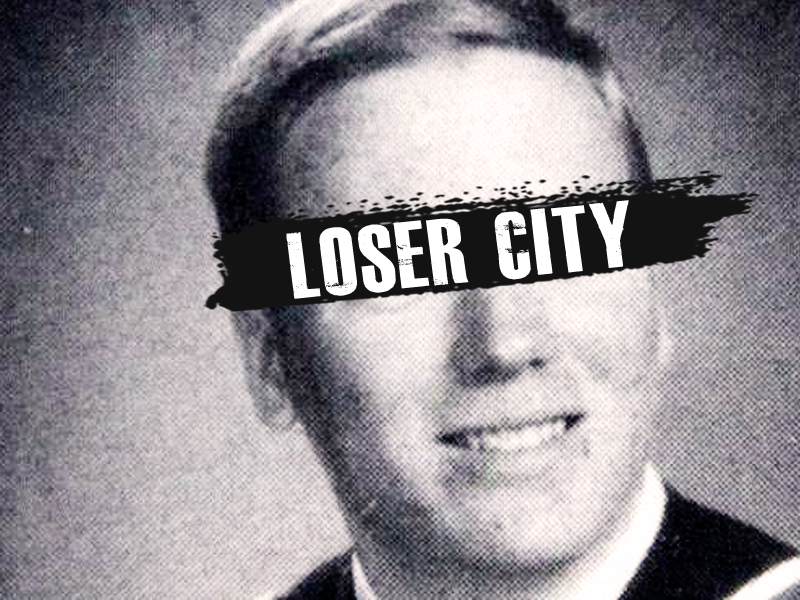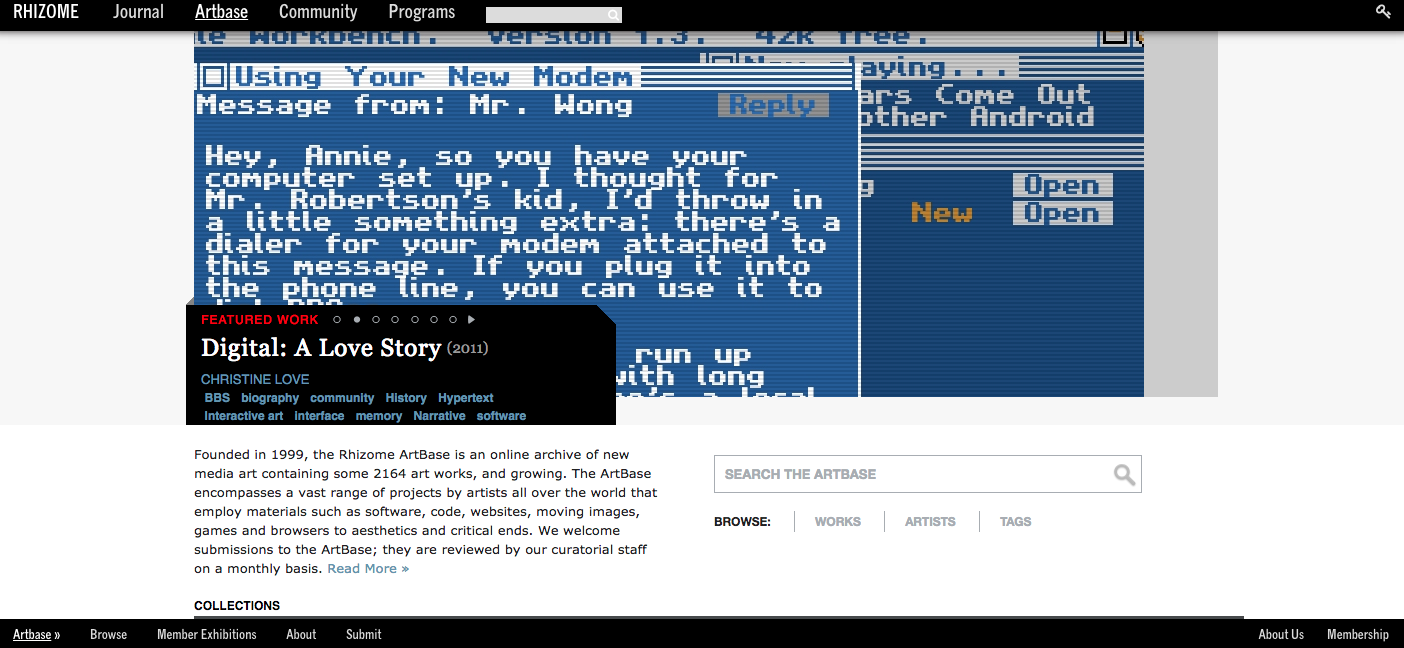In “The Selfie Stage,” Max Blue takes aim at a society so narcissistically enamored of its self-indulgent technologies that it threatens to recede into a reclusive oblivion. Blue speaks to the power of the selfie as a Kubrickian monolith, as a source of Lacan’s “Ideal-I,” while warning of the implications. Ultimately, Blue suggests, we are allowing digital representation of reality to supplant reality itself. We find ourselves victims of the “Selfie Stage,” amiably complicit in the severance of human bonds. Perhaps the only way out is from within.
:::
The technological influence on our social communication has become pervasive as quickly as the scene-to-scene shift in 2001: A Space Odyssey, from the dawn of man and the monolith-as-locus of language to the (not so) distant future in which we see an estranged father FaceTime (for all intents and purposes) with his young daughter from outer space. It would be difficult to better illustrate the distance between child and parent, self and other, than in representing the father as a literal astronaut. If the monolith in 2001: A Space Odyssey is the locus of language, then the smartphone is today’s monolith, the harbinger of the future of representational social communication.
In his talk-turned-essay The Mirror Stage, Jacques Lacan speaks to what he defines as the foundation of narcissistic aggression, the striving towards an “Ideal-I.” That is, the image of oneself encountered in the mirror between the phase of infancy and just before the individual has attained cognitive personhood, when they are, “for a short while, but for a while nevertheless, outdone by the chimpanzee in instrumental intelligence,” as Lacan phrases it, but “can already recognize [their] own image in a mirror.” (Lacan, 1) That image offers a relief from the feeling of an incoherent lack of wholeness in oneself, presenting one with an image, a “gestalt,” of their Ideal ego, or the “Ideal-I.” In this way, our very notion of the self develops in relation to an other, an image.[1] It is in this state that narcissistic aggression is born. The Ideal-I “situates the agency of the ego, before it’s social determination, in a fictional direction, which will always remain irreducible for the individual alone, or rather will only rejoin the coming-into-being…” (Lacan, 5) The image is performed, presented, by the individual for the approval of the other. The inability to fully fulfill one’s own self image in the eyes of the other (which become our own eyes, the eyes we see ourselves through more so than our biological own), ultimately resolves in animosity towards oneself, a self flagellation for having fallen short. This is the basic principle of what Lacan deems “narcissistic aggression.”
Lacan’s theory has never been more true. He says: “This moment in which the mirror stage comes to an end inaugurates by the identification with the imago of the counterpart and the drama of primordial jealousy… the dialectic that will henceforth link the I to socially elaborated situations.” (Lacan, 5) In the age of the selfie, one has been granted the ability to literally re-present their mirror image, in the form of the smartphone camera photograph of themselves, as their primary form of representation and, when posted to a social media platform, social interaction.
In The Society of the Spectacle, Debord further outlines this argument in the context of an earlier form of the screen – the television screen, or the photographic nature of the media as it was just becoming so concretely prevalent in the 1960’s. The representation of the image of the self (which it has always been, preceding the technological advancement into a screen age) was moving away from the ephemeral and into the Real. In today’s technological landscape, not much has changed; the lens of the camera functions as the gaze of the Other and the screen acts as the stage on which we cast the portrayal of our image. Debord says: “Images detached from every aspect of life merge into a common stream, and the former unity of life is lost forever.” (Debord, 12) Today, the stream has merely become the feed – the Twitter feed, the Instagram feed, the Facebook feed… the irony therein being that those specific images are directly meant to reinforce the physicality of life by portraying lived experience, presumably culminating in a more accurate and concise representation of oneself than their physical presence could be, a record of one more dependable than their own memory.
In that way, one supposes, it could be said that the representation of the Ideal-I as posted-selfie on the social media platform is a more concrete formulation of the image than the psychological one donned like a costume and performed for interaction in the physical social sphere, a more amorphous and less consistent representation. After all, to begin with, as Debord says, “…all social life, is mere appearance.” (Debord, 14) But is this tangible ascension to the digital world, this virtuality becoming realer than reality (a dichotomy that Debord warns against), a good thing for the ego, the self, or psychoanalytic analysis? What is gained? What is lost? There exists an undeniable biological necessity for human contact, eye contact, physical interaction, and equally so, a psychological desire to fulfill the image of the gestalt. At a historical moment when the inhabiting of the “Ideal-I” has never before been so accessible, the question remains: for how long will the biological predisposition outweigh the psychological? Again, the smartphone has become the monolith imposing itself in our midst.[2]
We recede deeper into our digital worlds, farther from our interactions and lived experience in the realm of the physical. Lived experience becomes, in fact, only credible when validated and represented to the other through a social media post, a photographic reproduction. The verbal anecdote has been replaced by photographic evidence and social media posts. The need for (or joy of) having the conversations with each other has been usurped by your Instagram post that I saw before I even picked you up from the airport. Debord warns us that, “The spectacle’s function in society is the concrete manufacture of alienation.” (23) And while the society that he critiqued was one consumed by their television screens, today’s society can be found glued to their smartphone screens and carrying out more lived experience in their virtual worlds than in the realm of physicality. If “… the mirror-image would seem to be the threshold of the visible world…” (Lacan, 3) then has that visible world become the one that exists purely as a stream of images and visibles, the world of touch, taste, smell, and sound forgone?
Ever since the earliest form of a user based internet platform, the avatar has always been a representation of an idealized self, be it in a video game or chat room icon. Even in earlier technological generations – such as the 1960s when the television screen ruled in place of the cell phone screen, or the 1990s and early 2000s when desktop monitors controlled our means of representation – we have projected the image of the I into the realm of virtual media. Certainly the “Ideal-I” is always a virtual, ephemeral, image, perhaps less today than before the first screens were placed in our palms and pockets. We have moved beyond the avatar. We have replaced the avatar with some more literal version of ourselves: the Ideal-I. We have fully become the avatar. As Barthes says, speaking in the voice of the photographic subject, “I am neither subject nor object but a subject who feels he is becoming an object: I then experience a micro-version of death… I am truly becoming a spectre.” (Barthes, 14) Are we all then becoming digital spectres inside the cell phone screen, ghost images comprised of pixels and data? As Debord says, “The spectacle is not a collection of images; rather, it is a social relationship between people that is mediated by images.” (Debord, 12) And that relationship is estrangement. Referring back to 2001: A Space Odyssey, the estrangement between child and parent (characterized in more relationship than one), is presented with a kind of literality; the father “FaceTiming” with his daughter and later with his own parents. Throughout the film, the closest relationship that he manages to maintain is a working one with HAL 9000, an artificial intelligence computer, whom he ultimately must go inside of (penetrate) to destroy. If the smartphone is today’s monolith, then the virtual relations we carry out on social media platforms are becoming the vernacular, and our ability to exist in virtual space is analogous to the extent to which one exists in the estrangement of outer space. Our infatuation with the gestalt offered up to us by the power of modern technology has become a fulfilling surrogate for the love we might feel for another human being, as we penetrate virtual space in an erotic lusting after our own image. Woeful is the plight of Narcissus! We have fallen so deeply in love with the mirror image that we have chosen to live life inside the mirror itself. Inside ourselves, insofar as the self has always been determined by an image. Narcissism turned so aggressive that it threatens to isolate us all. The only solution may be to dismantle it from the inside out.
[1] I would like to clarify that the “mirror” must not always be applied to the concept of the mirror stage with literality. “The mirror,” is a rather abstract thing, an agent of the phenomenon that Lacan illustrates. The apparatus of the mirror manifests in several ways, in the literal sense, certainly, but also in the other as such. Parental praise, for instance, plays an instrumental role in the process of self-association with an ideal ego through the image represented by an other (or more specifically, a (m)other). Their praise is always directed at the gestalt of oneself, the very same thing encountered in the mirror, and never at the individual as a complete, complex, and internal being.
[2] I cannot help here but turn briefly to Benjamin’s notion of the aura. Debord says that “… the spectacle is the chief product of present-day society.” (Debord, 16) and if Benjamin’s work done in The Work of Art in the Age of Mechanical Reproduction is anything to go by, present-day society is contingent on the dissemination of the aura (be it the aura of an artwork, or, in this case, the aura of an individual) through the means of technological reproduction. What does it mean to reproduce someone’s very aura, or even to manufacture it?
Bibliography
Barthes, Roland. Camera Lucida: Reflections on Photography. New York: Hill and Wang, 1981. Print.
Benjamin, Walter, Hannah Arendt, and Harry Zohn. “The Work of Art in the Age of Mechanical Reproduction.” Illuminations. New York: Harcourt, Brace & World, 1968. N. pag. Print.
Debord, Guy. The Society of the Spectacle. New York: Zone, 1994. Print.
Lacan, Jacques. “The Mirror Stage as Formative of the Function of the I.” EÌ crits: A Selection.New York: Norton, 1977. N. pag. Print.
Sontag, Susan. On Photography. New York: Farrar, Straus and Giroux, 1977. Print.
2001: A Space Odyssey. Dir. Stanley Kubrick. Prod. Stanley Kubrick. By Stanley Kubrick,
Arthur C. Clarke, Geoffrey Unsworth, and Ray Lovejoy. Perf. Keir Dullea, Gary
Lockwood, and William Sylvester. Metro-Goldwyn-Mayer, 1968.
:::

Northern California native Max Blue is a writer of criticism, fiction and poetry. He has studied art history and photography at the San Francisco Art Institute and creative writing at the University of San Francisco. His writing has appeared in Art Practical and Square Cylinder, among others.



